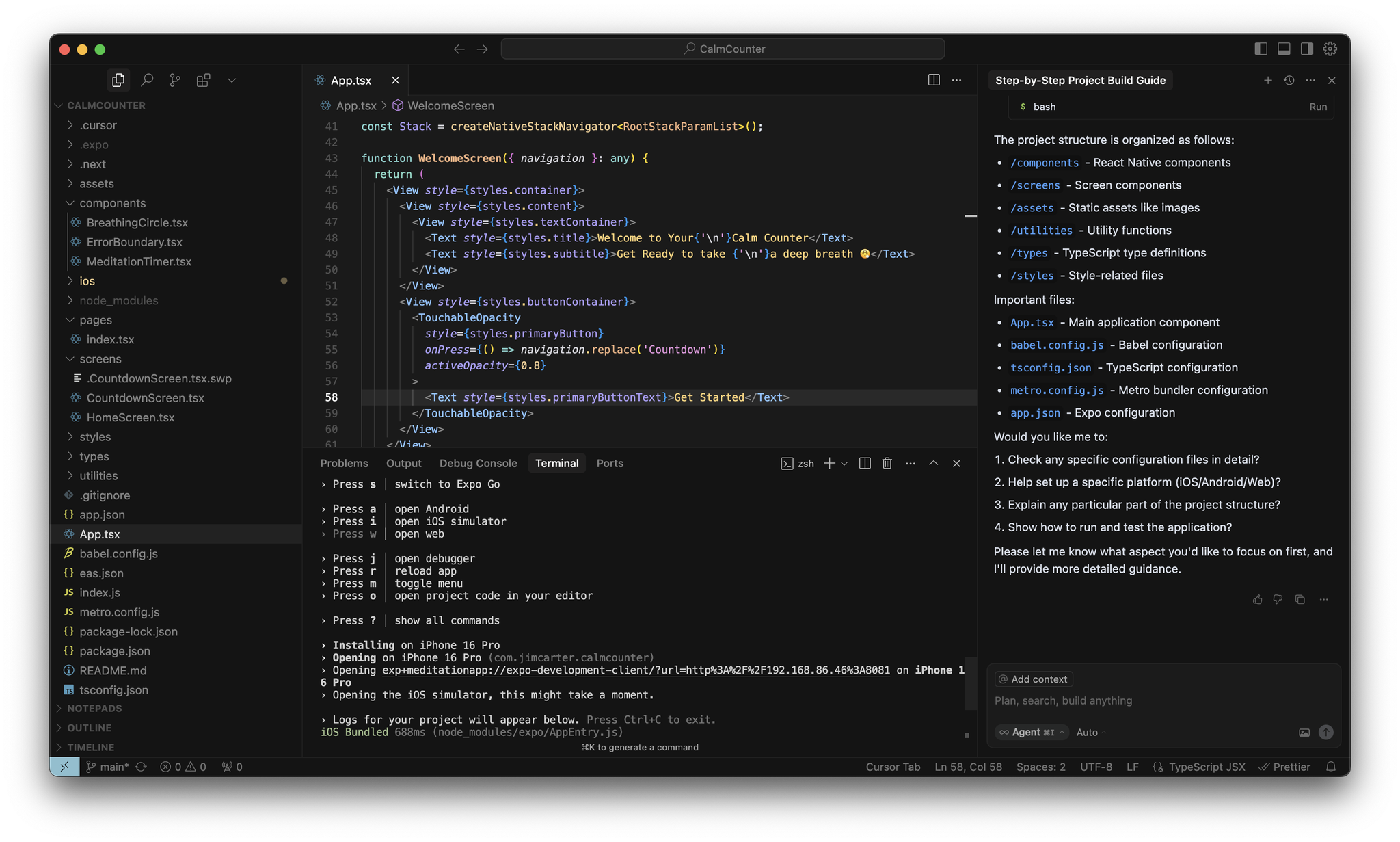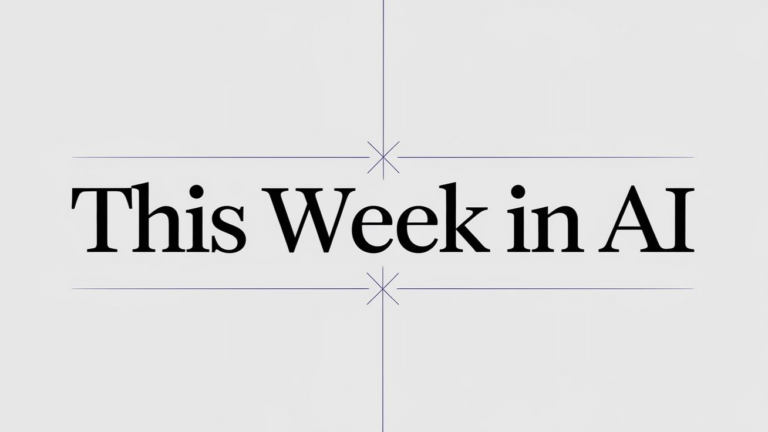🤖 Here’s How to Pick the Right ChatGPT Model
They’re all powerful, but they’re not all built for the same job. Here’s how to make sense of it.
Key Facts
- 💪 Different models, different strengths: GPT-4o, GPT-4.5, o4-mini, o4-mini-high, and more. Each has unique capabilities.
- 🧭 Match your model to your mission: Think about what you actually need. Everyday use? Deep analysis? Creative brainstorming?
- ⛵ More value, less overwhelm: Picking the right model helps you use AI strategically to save time, boost output, and avoid overwhelm.
When GPT-4o was releases (almost a year ago to the day) I wrote about it here & we all gasped. It felt like having an all-in-one assistant, handling text, images, audio, and even translating conversations was the end-all.
But here’s the thing: ironically, not everyone needs all that.
We’ve had a year to really get used to LLMs and find what we like in how different they are.
Preference breeds innovation, and now, a year later, the largest SOTA (aka State of the Art) models look totally different and we went from choosing one – to not knowing which one to pick.
Today I want to break down some simple examples, at least with GPT to help you understand how powerful they all are, in their own special ways.
🔍 Model Breakdown: What to Use & Why
GPT-4o: All-purpose use, including voice, vision, and real-time tasks
- “I just uploaded a photo, can you describe what’s happening in it and point out anything unusual?”
- “Here’s a short audio clip from a meeting. Can you summarize the main points discussed?”
- “I’m having trouble with my device. If I send a video, can you walk me through troubleshooting steps as you see what’s happening?”
GPT-4.5 More advanced reasoning and edge cases
- “Can you review this complex contract and highlight any potential risks or ambiguous clauses?”
- “I’m designing a new product, what are some things I should consider that might cause it to fail?”
- “Here’s a summary of a research paper. Can you critique its methodology and suggest how it could be improved?”
o4-mini: Fast + efficient for coding and technical work
- “Review this code and tell me if you spot any errors or inefficiencies.”
- “I need a quick template for a Python script that connects to an API, can you generate one?”
- “Can you check this SQL query and suggest any optimizations?”
o4-mini-high: High-performance data processing
- “I’ve uploaded a massive CSV file, can you quickly summarize the key trends or outliers?”
- “Can you process this dataset and create a simple chart showing monthly growth?”
- “Here’s a folder of log files. Can you extract and summarize the most common errors?”
o3: Ideal for deep problem-solving and research
- “I’m working on a research project, can you help me brainstorm innovative solves to this technical problem?”
- “Can you review this scientific paper and point out any gaps in the research?”
- “I want to design an experiment for my business, can you outline the steps and potential pitfalls?”
o1-pro: Built for highly specialized tasks (medicine, legal, finance)
- “I’m a doctor reviewing patient data, can you help interpret these lab results and suggest possible diagnoses?”
- “I need a compliance checklist for launching a financial product in the US, can you draft one?”
- “I’m preparing for a legal case, can you summarize relevant precedents based on this summary?”
👉 Your Move:
- Map your needs. What do you want AI to do for you?
- Test a model. Start with GPT-4o for general tasks then switch it up to see how different the responses are.
- Experiment + Evaluate. The best model is the one that actually helps you work smarter.
Why it Matters:
The right model can reveal so much more value from AI, whether you’re building, brainstorming, or analyzing.
📊 AI Isn’t Just for Work Now (And It’s Weirdly Comforting?)
AI is evolving from a task tool to a life companion, and people are using it in ways we didn’t expect.
Key Facts
- 📋 Shifting Use: By 2025, AI isn’t just about work, it’s helping us navigate our personal lives.
- ⭐ Top Uses: Organizing life, personal growth, and even finding purpose.
- ❤️ Emotional Support: AI is becoming a companion, offering connection and guidance.
Not too long ago, AI was that cool tool we used to automate emails or crunch numbers.
We still use it for this, but things are changing.
Fast.
Last year, we mostly used AI for brainstorming, editing, or writing. Fast forward (a year) to today, and it’s like we’ve invited a new friend into our lives, one that listens, helps us reflect, and sometimes even aids in making tough decisions.
Just check this out 👇👇👇

Some of my big takeaways?
“Generating ideas” has fallen from the top spot to sixth place, and “specific search” now ranks 13th.
Meanwhile, users are increasingly turning to AI for emotional support, planning, and goal-setting.
This shift is changing the nature of our relationship with technology…
And this is just the beginning.
😮💨 Calm Counter for iOS: My 4-Hour App
About a month ago I got my Apple Developer Account re-booted.
I used to build iOS & Android apps about 100 years ago, and as much as I loved that feeling of launching one to the public, they were such a long & drawn out process, it almost made them not worth the effort.
Then I thought:
“Yo Jim, you’re already vibe-coding full stack applications with AI, why not an iOS app?”
*cracks knuckles*

Enter my 4 hour app. Calm Counter 🔗
As an experiment, I asked myself:
“Can AI not only code the thing, but also come up with the flows, colors, icons, transitions, app store details… basically everything”
The answer?
🫡 Yes.

After a session with GPT outlining the app concept, generating assets and creating the idea scaffolding…
I fired up my favorite AI coder, Cursor AI 🔗 and got to work.
Actually, I didn’t do the work. I was watching a movie on the couch with the kids.
Cursor was CRANKING though.
One feature, one build, one creative adjustment at a time and before I knew it, I had a fully functioning, simple, meditation app on my phone.
Transitions, colors, haptics, dynamic animations… all of it.
I used GPT to finish the assets, hit submit on the App Store and about 20hrs later, it was live.
Now, let’s talk about how applicable this is.
- Am I charging for it? No.
- Does this have beautiful, defining factors? No.
- Does this justify my time to be a priority in my day? No.
However,
- Is it crazy that this didn’t exist 24hrs earlier? Yes.
- Was I able to prototype an idea in my head? Yes.
- Was it fun? YES.
The real win here is the fact that I was able to “ship” this out into the world, so fast, and so effortlessly – it’s a reminder that with a little bravery + conviction, there’s little-to-nothing stoping you from bringing new ideas to life in 2025.
This is the reason I’m so excited to be growing the latest iteration of my “prototype-first” startup, https://bara.ai 🔗
Gone are the days of long, drawn-out processes with huge budgets in order to create an idea.
It’s time to take this seriously, and support what already works – or bring to life what’s on your heart, without the feeling of regrets and what-if’s.
You can just do things.
I’m cheering you on.
